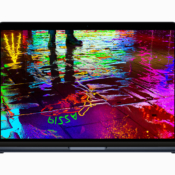MacBook Air M2 teardown
This is not yet iFixit's teardown, which usually goes a little deeper and shows more detail. However, some interesting information can already be retrieved from Max Tech's teardown and it confirms some suspicions. While the exterior of the M1 and M2 MacBook Pro is very different, there are more similarities to discover on the inside. The flatter design does give Apple the option to build in a battery with more capacity. There is now a 52.6 Watt hour battery in it, while it was a 49.9 Watt hour battery in the previous one. However, the usage time on paper has remained the same: 18 hours.
The teardown also reveals Apple's M2 chip, revealing that the 256GB storage model is equipped with just one NAND storage chip, allowing this model to deliver 30% to 50% slower read and write speeds for the SSD. compared to the previous model.
This MacBook is difficult to repair, as the NAND and RAM chips are soldered to the logic board. They are difficult to replace after purchase. In the photo below you can see the logic board, with the M2 chip indicated in blue and the empty space in red where an extra NAND storage chip could have been. If you buy the upgrade, you get 2x256GB SSD storage and then the empty space is filled.


Also see 


The entry-level model of the MacBook Air M2 is also slower (but not everyone will notice)
The first benchmarks of the MacBook Air M2 show that the model with 256GB storage scores lower on performance. The SSD storage allows for lower scores when moving large files and multitasking. But not everyone will notice.
The MacBook Air 2022 is already in the shops and costs €1,519,- for the entry-level model. Whether it makes sense to upgrade to more SSD, more RAM or more GPU cores, we have explained in a separate article.
Also see 


Which MacBook Air upgrade is the most useful: GPU, RAM or SSD?
When buying a MacBook you can choose from various upgrades. Do you opt for a better CPU/GPU, more SSD storage or more RAM? We'll discuss it with reference to the MacBook Air.